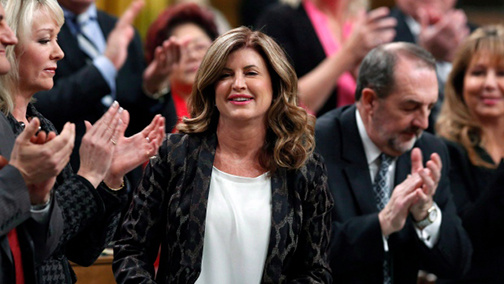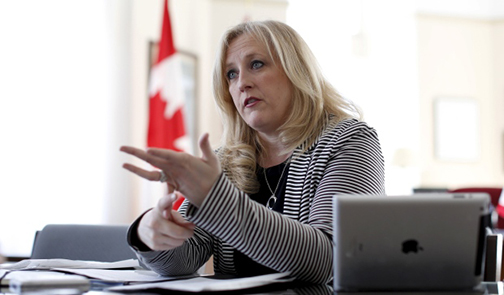

ANALYSIS
Census shows Conservatives still hold sway in Canada's fastest growing regions
Population in Liberal and NDP ridings growing at slower pace
In 2015, the Conservatives won 29 of 34 seats in Alberta, the province with the most dramatic population growth in the country.
With the West leading the country in population growth and Atlantic Canada stagnating, the Conservatives continue to have the most to gain from the demographic trends revealed in the latest census release from Statistics Canada.
And while the numbers are a mixed bag for the governing Liberals, the changing population figures in Canada's 338 ridings point to potential difficulties for the NDP.
The electoral map won't be redrawn until after the next census in 2021, so at least one more election will be decided using the current boundaries. But it's better for a party's future to be on the right side of the demographic trends.
According to the 2016 census, the first results of which were published Wednesday, Calgary and Edmonton were the fastest growing metropolitan areas in the country. They are also home to two of the three ridings that saw the most growth: Edmonton–Wetaskiwin had an increase in population of 43.5 per cent since 2011, while Calgary Shepard grew by 33.7 per cent.
New ridings will need to be added to Edmonton and Calgary to keep up with the growth. These new seats will likely be of benefit to the Conservatives, though both cities were more competitive in the 2015 election than they had been in decades.
A population boom in Brampton, Ont., and north of Toronto, on the other hand, is more helpful to the Liberals — they won seven of the eight area ridings with above-average growth and would be in a good position to pick up any ridings that are added.
New ridings east of Vancouver could also prove fertile ground for the Liberals.
Census 2016: Canada's population surpasses 35 million
Cities home to big share of Canada's population
Certainly, the political landscape could shift dramatically by the time these new ridings are created. But the change in population patterns could also have an impact even before the electoral boundaries are redrawn.
Take the example of Dufferin–Caledon, a riding northwest of Toronto that the Conservatives won by some 4,300 votes in 2015. It contains the municipality of Shelburne, which experienced a 39 per cent increase in its population — one of the biggest jumps anywhere in the country.
Elsewhere in the riding, however, the town of Orangeville grew by just three per cent, while the population dropped around Bolton. The Conservatives won Orangeville and Bolton comfortably, but the Liberals narrowly beat them in Shelburne. If population growth in Shelburne continues to outstrip that of Orangeville and Bolton, the Liberals could have a better chance of winning the riding in the future.
Conservatives in growing West
Of the 50 fastest growing ridings in the country, half of them are held by the Conservatives despite the party holding less than a third of the seats in the House of Commons. On average, ridings won by the Conservatives boasted a growth rate of 7.1 per cent since 2011, better than the national average of five per cent.
This is largely because the Conservatives hold all but five of the 34 seats in Alberta, the fastest growing province in the country.
The Conservatives also had above-average growth in their Ontario ridings (5.7 per cent against 4.6 per cent for the province as a whole) and represent three of the seven fastest growing ridings in the province: Milton, Markham–Unionville and Carleton.
The party also holds ridings in and around Quebec City, which grew at a quicker rate than the rest of Quebec.
Conservative ridings in Saskatchewan and Manitoba, however, had below-average growth. This was due to the party being pushed out of Winnipeg and losing seats in Saskatoon and Regina, the third and fourth fastest growing cities in the country.
Liberals in stagnant East
Liberal ridings had an average growth of four per cent, below the national average, mainly because the party swept the 32 seats in Atlantic Canada, a region that only had 0.2 per cent growth.
Ten of the 20 ridings with the biggest decrease in population were in Atlantic Canada, topped by Cape Breton–Canso's drop of 4.4 per cent.
While the region is unlikely to lose seats in the future due to constitutional requirements that it have at least as many seats in the House as it has in the Senate, Atlantic Canada's share of all seats nationwide will continue to decline.
Liberal leader Justin Trudeau greets supporters during a campaign rally in Surrey, B.C., on Oct. 18, 2015. The Liberals did well in the booming city in the last election. (Reuters)
The Liberals were also under-represented in the fastest growing ridings in Quebec and overrepresented in the province's ridings seeing the biggest decrease in population, such as in Gaspésie.
This was in contrast to the Bloc Québécois, which had average growth of 5.1 per cent in its 10 ridings, with a boost from its seats north of Montreal.
But the Liberals won ridings in the West where the population is booming. Growth in Liberal ridings in Saskatchewan and Manitoba averaged 6.4 per cent, above the region's overall six per cent growth. In British Columbia, Liberal ridings grew by 6.7 per cent, compared to 5.6 per cent for the province as a whole. Seat wins in cities like Winnipeg, Vancouver and Surrey helped boost the numbers.
NDP represents slow-growth regions
Seats held by the NDP had an average growth of just 3.6 per cent, well below the national average. This was largely due to the party's holdings in northern Ontario, in the city centres of southwestern Ontario (Hamilton, Windsor and London) and in rural and northern British Columbia.
Skeena–Bulkley Valley, held by the NDP's Nathan Cullen, was one of only two ridings in all of Western Canada to experience a decrease in population.
On the plus side for the party, the NDP also won seats in growing cities like Regina and Saskatoon and on Vancouver Island.
All about the suburbs
But if the New Democrats are to improve their electoral prospects, they'll need to make inroads in more parts of the country that are growing. The Conservatives already have an intrinsic advantage due to their historic popularity in the growing West, a region that will increasingly carry more weight in the House of Commons.
The Liberals — with seats in the declining regions of Atlantic Canada but also in the growing parts of Ontario and the West — need to ensure they don't lose the suburban gains they made in the last election.
The trend lines of the 2016 census continued those of 2011. The political calculus that has emphasized the electoral importance of the suburbs has also held constant.


